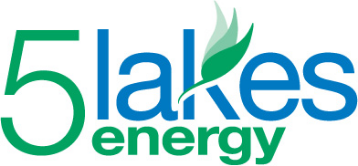TESTIMONY FOR THE SENATE ENERGY AND TECHNOLOGY COMMITTEE
On the REVIEW OF PUBLIC ACT 295 OF 2008
by
Martin Kushler, Ph.D.
Senior Fellow
American Council for an Energy-Efficient Economy (ACEEE)
(October 2011)
Thank-you for the opportunity to testify on this important subject.
My name is Dr. Martin Kushler, and I am a Senior Fellow with the American Council for an Energy-Efficient Economy (ACEEE). I have over 30 years of experience directing research and program evaluation in the area of utility energy programs, including 10 years as the Supervisor of Evaluation of the Michigan Public Service Commission (MPSC). I am a lifelong resident of Michigan, and work out of my office in Williamston, Michigan.
Congratulations!
The first thing I’d like to do is congratulate Michigan for being the “most improved state” in the nation in ACEEE’s 2011 State Energy Efficiency Scorecard. Every year we rank all 50 states on their energy efficiency policies and performance, and this year Michigan was the most improved state in the nation, rising from 27th to 17th in the rankings. This was largely the result of the effects of the energy efficiency policies contained in PA 295 having been ramped up into successful implementation.
Three Key Reasons why Energy Efficiency has Enjoyed Bi-Partisan Support
PA 295 was passed with strong bi-partisan support (26-10 in the GOP led Senate, and 83-24 in the Democratic led House) in late 2008. The energy efficiency[1] provisions of that legislation were especially important and timely, for three fundamental reasons:
1) lowest cost – Energy efficiency is by far the lowest-cost source of energy. Repeated studies have documented that energy efficiency programs can save electricity at a cost of less than 3 cents per kWh…. whereas electricity from new power sources costs 8 cents to 12 cents per kWh or more.[2] If a utility system operates energy efficiency programs at scale, it can avoid having to purchase more expensive power….thereby saving ratepayers literally billions of dollars.[3]
2) Reduces Dollar Drain for Imported Fuels – Michigan has to import nearly all of the fuels we use. Michigan imports 100% or the coal; 100% of the uranium; 99% of the oil and petroleum products; and three-fourths of the natural gas we consume. This creates a huge “dollar drain” on the Michigan economy, totaling about $25 billion dollars a year. Every dollar of fuel imports avoided through energy efficiency is a dollar we can keep circulating in our state economy.
3) Increases Employment – Energy efficiency is a very labor-intensive industry. Every dollar spent in Michigan in the industries supported by energy efficiency produces five times the “economic multiplier” of a dollar spent on the traditional utility supply system. Much of that is due to the fuel import dollar drain described above, but it is also due to the labor-intensive nature of work retrofitting homes and businesses to be more energy efficient. Every bit of the “energy efficiency resource” is “mined” from the homes and business facilities right here in the state. Those are jobs that can’t be “outsourced”.
Quite simply, anyone who wants to fight to “defend and protect Michigan” should have energy efficiency as a top state policy priority. This has never been, and should not be, a partisan issue.
Very Popular with the Public
One additional reason why PA295 passed with strong bi-partisan support is that energy efficiency is very popular with the public. Surveys repeatedly show that energy efficiency is the most strongly supported energy option. As an example, a statewide statistical survey of Michigan conducted by Michigan State University found that 90% of respondents agreed that “the state should require utilities to promote energy efficiency”.[4]
Excellent Success to Date
We now have nearly three years of experience with the energy efficiency programs created under PA295, and they have been extremely successful. Our major utilities have exceeded the energy efficiency goals each year, and report that these programs have been both highly cost-effective (saving at least $4.00 in utility costs for every dollar spent on the energy efficiency programs) and very popular with customers. The Michigan legislature should be commended for having “gotten it right” with the PA295 provisions for energy efficiency (“energy optimization”).
[1] Michigan came up with its own creative name for energy efficiency, calling it “energy optimization”. This is an appropriate name in that energy efficiency provides a way to optimize energy policy because it is the lowest-cost energy resource.
[2] This is well documented by reputable business organizations, including Lazard, Inc. (one of the largest consulting firms in the world serving the international banking community) and McKinsey & Company (a prominent research firm serving business and government sectors world wide). Our own ACEEE study in 2009 reviewed the results from 14 states around the nation with large scale utility energy efficiency programs, and found an average cost of conserved energy of only 2 ½ cents per kWh (http://www.aceee.org/research-report/u092 ).
[3] The Michigan 21st Century Energy Plan, produced by the MPSC in 2007, showed how an energy efficiency program very similar to that created by PA295 would save Michigan ratepayers $3 billion over the next 20 years http://www.michigan.gov/documents/mpsc/21stcenturyenergyplan_185274_7.pdf.
[4] A presentation entitled “The Public’s Take on Michigan’s Energy Discussion”, by the Institute for Public Policy and Social Research (IPPSR) at Michigan State University. Presented at the Anderson House Office Building, Lansing, Michigan, January 30, 2008.
